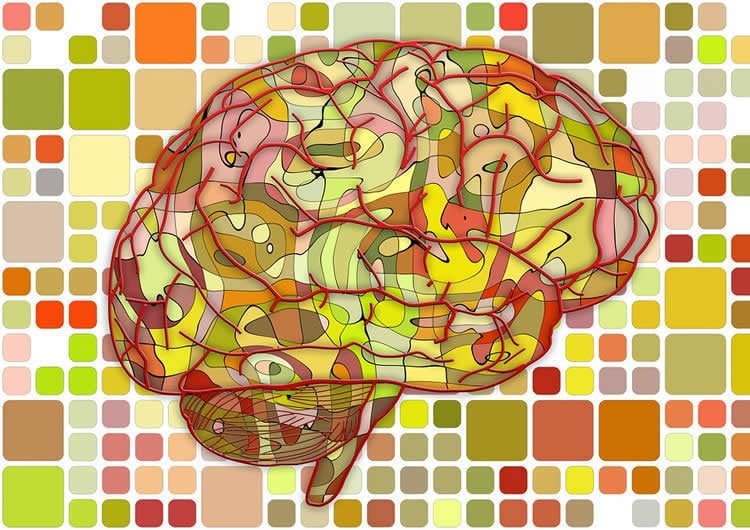Summary: A new MRI study reveals the brain retains neural ‘fingerprints’ of a missing hand, decades after amputation and regardless of whether the person experiences phantom limb sensations.
Source: eLife.
Researchers have found that the brain stores detailed information of a missing hand decades after amputation, regardless of whether amputees still experience phantom hand sensations.
Their study, published in eLife, revealed detailed hand information in the brains of amputees compared with people who had been born with a missing hand. The research could pave the way for the development of next-generation neuroprosthetics – prosthetic limbs that tap into the brain’s control centre.
The findings build on the team’s previous work where they used an ultra-high-power MRI scanner to look at the brain activity of two people who had lost their left hand through amputation between two and three decades ago. Although there was less brain activity related to the fingers of the left hand, they found that the specific patterns making up the composition of the hand picture in the brain were well matched to those of two-handed people.
“Our previous findings demonstrated the stability of the hand picture in the cortex despite decades of amputation,” explains lead author Daan Wesselink, a PhD student at the University of Oxford and UCL Institute of Cognitive Neuroscience, UK. “However, we didn’t know whether this hand representation in the brain reflects phantom sensations and therefore only persists in those few people who experience vivid sensations.”
To address this question, they used a brain-decoding technique based on the pattern of brain activity in 18 amputees, who lost their hand to amputation on average 18 years ago and experience varying vividness of phantom sensations. The team also looked at whether development of the hand’s neural fingerprints requires some prior experience of having a hand, by studying 13 people who were missing one hand from birth. They asked both groups to ‘move’ the fingers of their missing and intact hands while in an MRI scanner, and compared the results to two-handed participants.

They found that the brain activity of amputees who had the strongest sensations of being able to move each of their phantom fingers retained the clearest information of their missing hand in their brain. But even those who barely experience phantom hand sensations had the same information preserved in their brains, which was surprising because those amputees have no experiences during their daily life that their brain has held on to this information about their former limb.
By contrast, the group born with one hand showed some brain activity during phantom limb movement, but did not have the same neural fingerprint dedicated to their missing hand. This suggests it could be more challenging to design neuroprostheses or perform hand transplants for this group.
“We’ve shown that once the hand ‘picture’ in the brain is formed, it is generally unlikely to change, despite years of amputation and irrespective of the vividness of phantom sensations,” concludes senior author Tamar Makin, Associate Professor and Sir Henry Dale Fellow at the UCL Institute of Cognitive Neuroscience. “Our work suggests that daily life experience could shape the fine-grained aspects of hand representation, but that the large-scale functional organisation of the hand area is fundamentally stable.”
Funding: Wellcome, Royal Society, CREATE-IRTG funded this study.
Source: Emily Packer – eLife
Publisher: Organized by NeuroscienceNews.com.
Image Source: NeuroscienceNews.com image is in the public domain.
Original Research: Open access research for “Obtaining and maintaining cortical hand representation as evidenced from acquired and congenital handlessness” by Daan B Wesselink, Fiona MZ van den Heiligenberg, Naveed Ejaz, Harriet Dempsey-Jones, Lucilla Cardinali, Aurelie Tarall-Jozwiak, Jörn Diedrichsen, and Tamar R Makin in eLife. Published February 5 2019.
doi:10.7554/eLife.37227
[cbtabs][cbtab title=”MLA”]eLife”Brain Hand Map is Maintained in Amputees with and Without Phantom Limb Sensations.” NeuroscienceNews. NeuroscienceNews, 5 February 2019.
<https://neurosciencenews.com/hand-brain-map-phantom-limb-10693/>.[/cbtab][cbtab title=”APA”]eLife(2019, February 5). Brain Hand Map is Maintained in Amputees with and Without Phantom Limb Sensations. NeuroscienceNews. Retrieved February 5, 2019 from https://neurosciencenews.com/hand-brain-map-phantom-limb-10693/[/cbtab][cbtab title=”Chicago”]eLife”Brain Hand Map is Maintained in Amputees with and Without Phantom Limb Sensations.” https://neurosciencenews.com/hand-brain-map-phantom-limb-10693/ (accessed February 5, 2019).[/cbtab][/cbtabs]
Abstract
Obtaining and maintaining cortical hand representation as evidenced from acquired and congenital handlessness
A key question in neuroscience is how cortical organisation relates to experience. Previously we showed that amputees experiencing highly vivid phantom sensations maintain cortical representation of their missing hand (Kikkert et al., 2016). Here, we examined the role of sensory hand experience on persistent hand representation by studying individuals with acquired and congenital hand loss. We used representational similarity analysis in primary somatosensory and motor cortex during missing and intact hand movements. We found that key aspects of acquired amputees’ missing hand representation persisted, despite varying vividness of phantom sensations. In contrast, missing hand representation of congenital one-handers, who do not experience phantom sensations, was significantly reduced. Across acquired amputees, individuals’ reported motor control over their phantom hand positively correlated with the extent to which their somatosensory hand representation was normally organised. We conclude that once cortical organisation is formed, it is remarkably persistent, despite long-term attenuation of peripheral signals.






